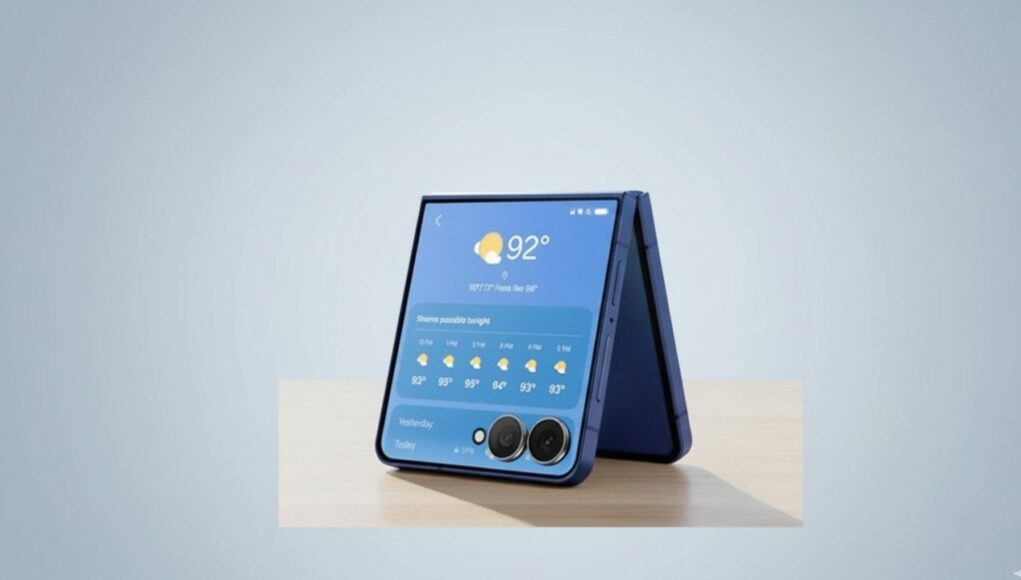The Geographic Precision Problem
Samsung Weather treats administrative wards as single meteorological units, creating massive blind spots for rural users. In practical terms, villages just 2 kilometers apart can experience completely different weather conditions. Rain hammering one farm might mean clear skies less than 2km away—a difference that determines whether farmers head to fields or shelter seedlings.
Why This Matters
This isn’t a minor inconvenience; it’s the difference between a productive day and crop damage. Google understands this spatial reality; Samsung doesn’t. This gap reveals how differently companies approach weather technology in emerging markets where granular, actionable forecasts genuinely impact livelihoods.
Google’s MetNet AI: A Game-Changer for Africa
Google deployed its refined MetNet AI model across Africa earlier this year, creating a transformative shift in weather data delivery for precision-dependent users. Google’s system delivers three capabilities Samsung Weather cannot match:
Spatial Precision
Google: Predicting rain within a 5km radius
Samsung: 24km ward-level approximations
Update Frequency
Google: Updates every 15 minutes
Samsung: Daily or static forecasts
Forecast Accuracy
Google: Village-level accuracy up to 12 hours ahead
Samsung: Generalized ward-level predictions
When checking weather for specific farms, Google shows forecasts tailored to actual locations, not generalized predictions for entire administrative regions. Screenshots clearly demonstrate this difference—Google shows different forecasts for neighboring villages just 2km apart, while Samsung Weather averages everything into a single ward-level prediction. This represents a fundamental architectural difference in data collection and prediction modeling.
Samsung’s Beautiful Interface Can’t Mask Data Limitations
Samsung’s redesigned weather app in One UI 8 deserves genuine praise for interface design and feature richness. The app features an animated character that walks across screens dressed according to current conditions—summer clothes for hot days, raincoats for showers, heavy layers for cold snaps. This charming approach makes weather checking feel less utilitarian.
Samsung Weather App Features
- Hourly temperature and precipitation breakdowns
- UV ray strength monitoring
- Sunrise and sunset times
- Pollen data tracking
- Weather-based outfit suggestions
- Exercise recommendations
- Comparisons with previous conditions
- 8-day forecast with contextual cards
The 8-day forecast with contextual cards surpasses Google’s more minimalist 10-day view. On interface and feature richness, Samsung clearly wins, feeling modern, responsive, and thoughtfully designed. However, this polish masks a critical flaw in underlying data architecture. An animated character in appropriate seasonal clothing means little when forecasts apply to someone 7km away.
Real-World Impact: When Precision Matters Most
This comparison reveals deeper truths about technology design in markets where weather forecasts aren’t entertainment—they’re operational necessities. For rural farmers, knowing that “Sabatia Ward” might see rain proves useless without knowing whether specific fields will be affected.
Side-by-Side Testing Results
Samsung Weather displayed one forecast for entire wards while Google Search weather showed distinctly different conditions for specific villages versus ward averages. When making agricultural decisions about irrigation, pesticide application, and crop protection, precision gaps become the difference between profit and loss.
The Philosophical Divide: Convenience vs. Infrastructure
Samsung’s weather app demonstrates that excellent design and rich features cannot compensate for imprecise underlying data. In markets where weather directly impacts livelihoods, hyperlocal accuracy beats aesthetic appeal consistently.
Google’s African investment in hyperlocal weather forecasting signals recognition that emerging markets have different needs than developed regions. In agricultural communities where farming remains primary livelihood, village-level precision becomes essential. Samsung treats weather as consumer convenience; Google treats it as infrastructure enabling better decision-making at scale. This philosophical difference cascades through product design, data investment, and ultimately, user outcomes.
Potential Solutions for Samsung
Technically, Samsung has several paths forward:
- License Google’s hyperlocal weather data for integration into Samsung Weather
- Invest in its own AI model trained specifically on African weather patterns
- Partner with regional meteorological services possessing ground-based sensors and radar systems
The technology exists; the question is whether Samsung views weather as core competitive feature worth investment or merely as pre-installed decoration.
The Bottom Line: Accuracy Trumps Aesthetics
Ultimately, unglamorous accurate forecasts for specific farms surpass beautifully animated apps guessing for entire regions. Samsung Weather excels for checking general conditions and planning outfits, but for precision mattering in rural agricultural communities, Google’s AI-powered system remains unmatched.
Recommendation for Farmers
For farmers whose decisions depend on weather accuracy, using Google Search for hyperlocal forecasts proves essential, regardless of phone brand. When livelihoods hang in the balance, precision matters more than presentation.
Key Insights About Samsung Weather App Limitations
Understanding Samsung Weather App’s geographic precision failures is essential for navigating today’s technology landscape, particularly in agricultural communities. While Samsung offers superior interface design and feature richness, Google’s MetNet AI delivers the hyperlocal accuracy that transforms weather forecasts from casual information into actionable intelligence for farmers and rural communities across Africa.





